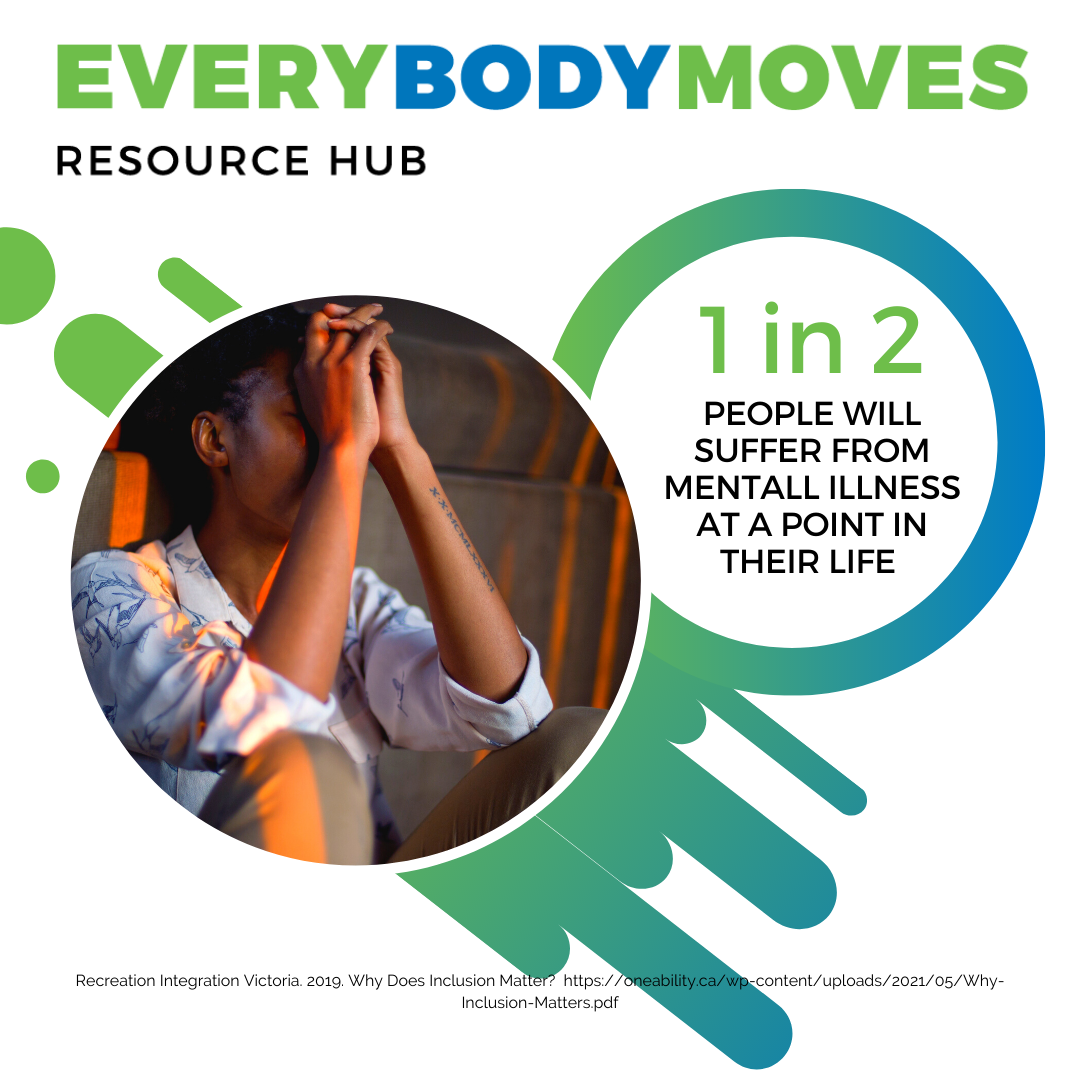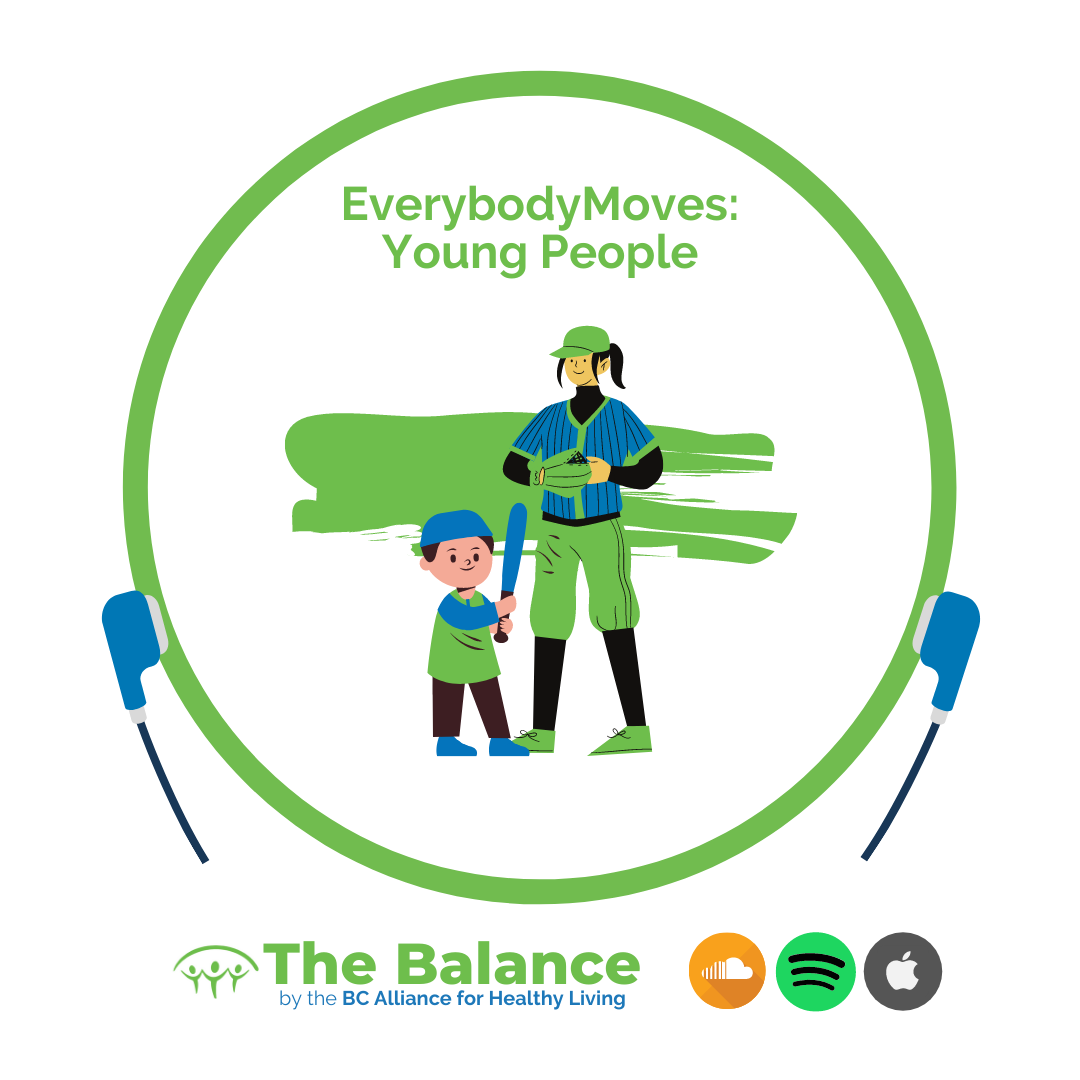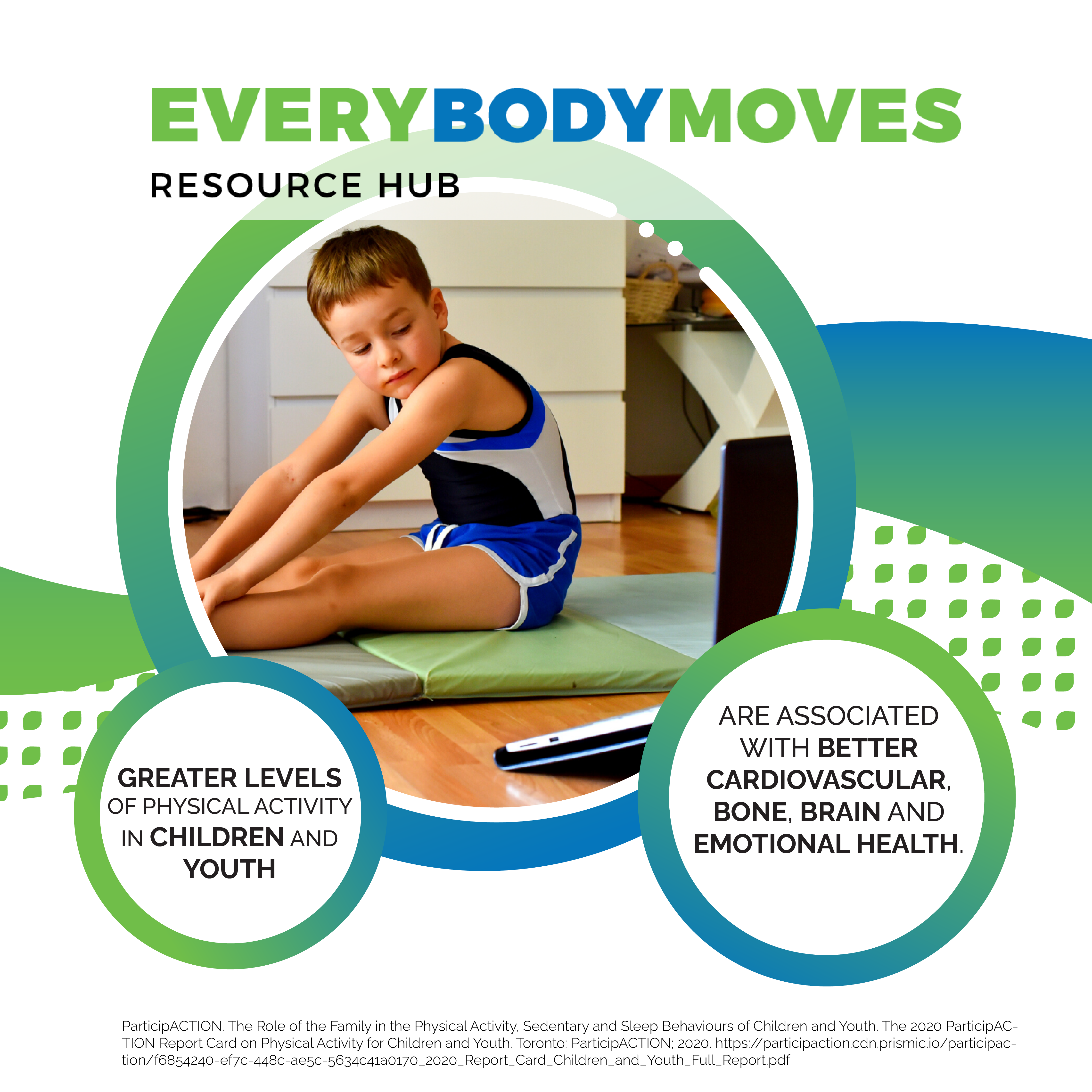
When we take care of our bodies, we take care of our minds. This intersection highlights why it’s so important to create equitable opportunities in sport and recreation spaces: because physical activity enhances physical, mental, and emotional health.
As the days get longer and warmer, and COVID-19 restrictions continue to ease, there are more chances for us to get out and get moving. There are also more chances for sport and recreation leaders to encourage people to participate in physical activity programs.
This Mental Health Week, the Physical Activity for Health Collaborative invites sport leaders, coaches, educators, and recreation leaders to utilize the EverybodyMoves Resource Hub. The Hub offers a collection of resources to help leaders and decision-makers create equitable, safe, and accessible sport facilities and spaces for people of all ages, abilities, and backgrounds. When physical activity is accessible and inclusive, mental well-being becomes more balanced for everyone.
Physical health and mental health are very closely related, with research showing that physical activity helps relieve stress. Moving and exercising helps the body release endorphins and other chemicals that help reduce the feeling of pain and boosts mood.
When we encourage movement, we encourage mental wellness. When we encourage mental wellness, we encourage healthy living on a holistic level for everyone.
Featured Resources
We Belong: A How-To Guide aims to provide recreational leaders, coaches, educators and facilitators practical tools to help newcomer youth feel welcomed and included in physical activity settings. Developed by PHE Canada.
Good Practices for Creating Gender-Equitable Boards in Sport
Canadian Women & Sport (formerly The Canadian Association for the Advancement of Women in Sport and Physical Activity -CAAWS), supports and champions Sport Canada’s objective of achieving gender equity in sport at all levels by 2035. CAAWS believes it begins at the top: ensuring gender-equitable boards of directors. This resource provides sport leaders with information including a checklist and tips on how to create gender-equitable boards.
PlanH provides a guide to support local governments as they build healthy communities throughout the province. Social connectedness makes people feel included and like they belong, which in turn encourages them to keep participating in recreation, sports, as well as other community activities that make them active and healthy.
Inclusive Physical Literacy Webinar
This webinar delivered by Andrea Carey of OneAbility introduced the concept of inclusive Physical Literacy, including how to offer inclusive programming and how to plan intentionally for inclusive programming and how to provide a supportive and welcoming environment for a person with a disability.

How can we as a community help youth overcome common barriers to physical activity & take steps to stop discrimination? Listen to The Balance to learn from Shawna Lawson, the Director of Research and Social Innovation at viaSportBC.
Listen on SoundCloud, Spotify, and iTunes.
Show Notes:
In this conversation, we mention BC’s Physical Activity Strategy, Active People, Active Places, and more specifically we talk about the initiative All Youth Matter: Inclusion Training.
Shawna, her team and many community and youth voices created this program which is a 4-hour workshop looking at what makes an inclusive environment, how to identify and address barriers and steps to take to intervene and stop discrimination.
Over 1500 Participants (mostly sport and recreation leaders) have been trained so far but it’s open to anyone who works with youth. You can find out more or to sign-up at info@viasport.ca
Other excellent organizations mentioned during our conversation were Red Fox Healthy Living Society and BCRPA.
The podcast theme song is Sneaky Business by Biz Baz Studio.
The Balance is recorded and produced by BCAHL’s Communications Manager on the traditional, unceded territories of the xʷməθkʷəy̓əm (Musqueam), Skwxwú7mesh (Squamish) and səl̓ilwətaʔɬ (Tsleil-Waututh) Nations.
Episode Links:

Grace Abioye runs a before and after-school care program and looks after a rambunctious group of elementary school-aged kids. She’s been the program leader for just over a year and wants to change up the activities to keep the children engaged. Recently a few new kids have joined the program that have disabilities.
Grace wants to ensure the new kids feel included, that they can all play together and is looking for ways to adapt activities. Grace is now looking for new activities to keep the kids healthy, active and engaged, but wants to ensure the resources she uses are according to Canadian guidelines and best practices.
Children and youth who engage in higher levels of physical activity have stronger cardiovascular, bone and brain health. That improved cognitive functioning from regular activity leads to better academic achievement. Unfortunately the reverse is true, children and youth who are insufficiently active are more likely to have symptoms of depression and anxiety, and increased odds of suicide ideation and planning.
According to the The Canadian 24-Hour Movement Guidelines, infants who are not yet mobile need at least 30 minutes of tummy time, while toddlers and preschoolers need at least 180 minutes of physical activity spread throughout the day of varying intensity.
Moreover, children and youth need at least 60 minutes of moderate to vigorous physical activity within a 24-hour period, and several hours of structured and unstructured light physical activity.
Physical activity leaders and community members can play a big role in getting young people active! School and recreation leaders can create inclusive and accessible programs and spaces that are welcoming and ensure everyone gets to play.
Family support has also proven to positively contribute to children’s physical activity levels. When parents or guardians add 20 minutes of moderate to vigorous physical activity to their day, children will add an average of 5 minutes to their own physical activity routine.
Despite all of the benefits of physical activity, less than one in five children and youth in Canada are meeting national guidelines for physical activity. By role-modelling, creating more accessible and inclusive programming and encouraging young people to be physically active, the community can make real life-long changes.
Grace started using Let’s Play to discover new activities and ways to adapt them for all abilities. With the resource, she’s learned more about the importance of physical activity among young people, and gathered new ideas for games. Grace is also pleased that the kids can continue playing together and learn how to adapt activities together.

Resources
EverybodyMoves has resources to get young people physically active. Look through the resources below, and check out the hub for even more! If you see a resource missing, submit it here. We want the Hub to house as many resources on inclusive and accessible physical activity as possible!
Let’s Play Toolkit
The Let’s Play Toolkit is a resource for educators, recreation leaders and coaches designed to support the development of physical literacy so that children with physical disabilities can confidently participate in play, sport and physical education with their peers.
Equity and Inclusion Lens Snapshot –Youth
This Snapshot created by the City for All Women Initiative was used to inform the work developed and implemented in their Equity and Inclusion Lens Handbook. This Snapshot highlights the multiple barriers and inequities that youth face, while also elaborating on the need for safe spaces, access to services and support systems.
Jooay App
Jooay is a free app that helps children with disabilities and their families locate leisure opportunities that are close to where they are, accessible, suit their needs and abilities, match their preferences and can help them develop and participate in society. Jooay also connects rehabilitation professionals, educators, and community members to learn from each other, exchange ideas and collaborate.
